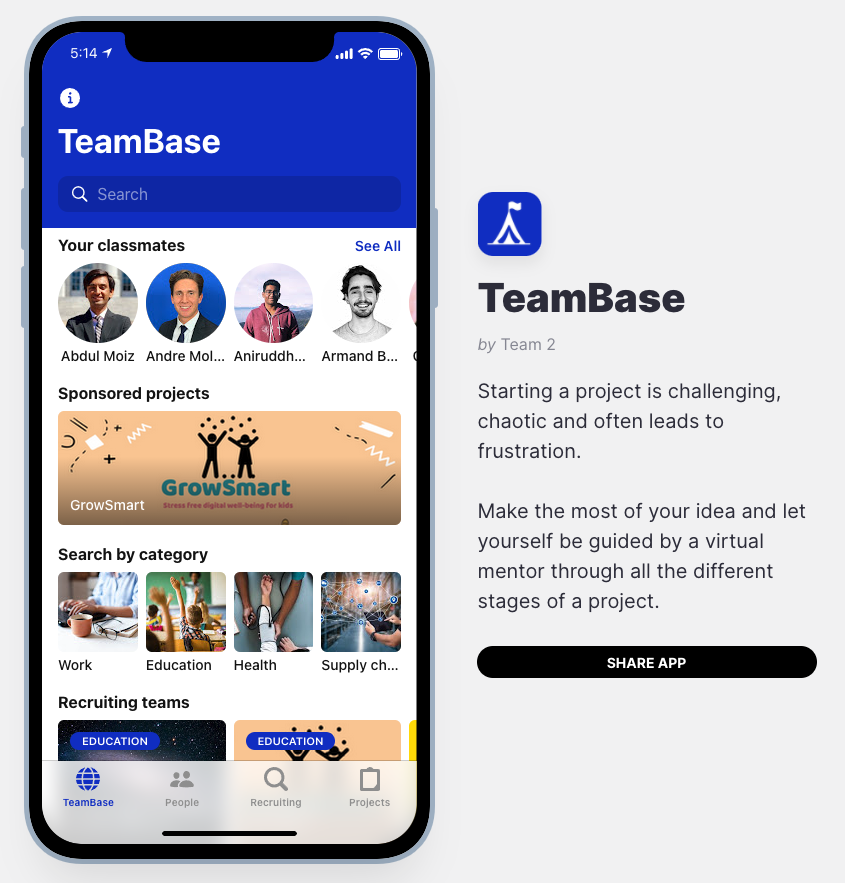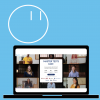TeamBase
A startup prototype for team formation

Project Overview
This was my first exposure to building a startup product from ground zero. I explored innovation engineering, project management, and product validation. The only way to validate the problem was through interviewing users and customers. Using inductive learning methods, I took creative ideas into action.
With a Product Manager role in this startup project, I established the project scope intending to solve the issues relating to team formation by performing user interviews and usability testing on the MVP. I also created business plans and conducted stakeholder interviews to validate the value proposition.
My Role in the Project
PRODUCT VALIDATION
Our initial solution was to design an AI algorithm where it will provide suggestions for teammates. Based on the user interviews, I learned that:
1. The design of the algorithm may lead to biases or potential discrimination
2. Students distrust the algorithm to provide team formation suggestions
3. The design of the algorithm is too complex and out of our ability since the requirements for an ideal teammate are highly personalized.
By conducting user interviews on various perspectives, I validated the problem, narrowed the scope of the project, and created a narrative for the product. The results of user interviews benefit the persona-building process later in the project.
USER EXPERIENCE RESEARCH
I conducted stakeholder interviews where I interviewed industry experts with over ten years of experience working in silicon valley. I learned that:
1. Tech companies have an annual budget to spend on recruiting where they generally prefer a referral system or use LinkedIn for recruiting
2. The project portfolio TeamBase offered does not provide added value to tech companies.
Our business plan is created to target educational institutions and possibly work with recruiting companies as the result of the interview.
The Minimum Viable Product of TeamBase was created as a “low-tech demo” showcasing the functionality and interface of the platform. I piloted several usability tests to observe potential target users (students) navigating the platform and documenting their behavior. I also asked them generalized questions regarding their experiences with the platform. With the user experience feedback collected qualitatively from participants, I provided suggestions on the interface design and reevaluated features of the platform (Example below).


What is TeamBase?
Need
We found that group forming in a project-based course or hackathon can be a challenge. There is often a lack of information and engagement necessary to find the ideal team. Traditionally, students will present their idea in front of a class that lacks a centralized method to learn more about specific concepts. Many classes deployed Google surveys or Excel spreadsheets as the primary method of group forming, which is complicated and unattractive visually. It simply is too time-consuming to read through lines and lines of cells to find an outstanding team.
Approach
We built a platform that allows students to visualize team and classmate information. This platform has functions that will enable students to message each other, add project ideas, search for a project, and filter projects based on categories in real-time. It provides an engaging solution and makes team formation efficient. By minimizing the time needed to search for a team, we also maximized the work time for groups under a restricted timeline of a semester. The big vision idea will also expand and provide project organization tools for tasks, communication, availability.
Persona
Aleks – A Berkeley professor teaching classes with 90 students working on 20 different projects. Aleks has to verify the requirements of each group, wants a balanced number of students, technical ability, expertise, and background in each group, and has to deal with group changes with new or failing projects.
Clara – Extrovert student who lacks the contact information of her classmates to form teams.
Katie is an introverted student who has great ideas but lacks the courage to pitch in front of a class.
Potential Customers
With the positive feedback from students and professors using this product as users, our potential customers are universities, schools, and companies. Educational institutions that have firsthand experience with our product are likely to purchase it. Industry professionals who may want to collaborate with students on projects are also likely to purchase our product to easily promote their projects on our platform.
Colleague
Innovation-X: Future of Industry Startup Lab at UC Berkeley is a course enabling students to apply both technical and broad skills in emerging ideas.
Yixan Cheng – Industrial Engineering and Operation Research Master Student
Clara Haba – Exchange Entrepreneurial Engineer Master Student from Spain
Jacob Garcia – Exchange Architect Master Student from Spain
Katie Lin – Undergraduate Psychology Senior



